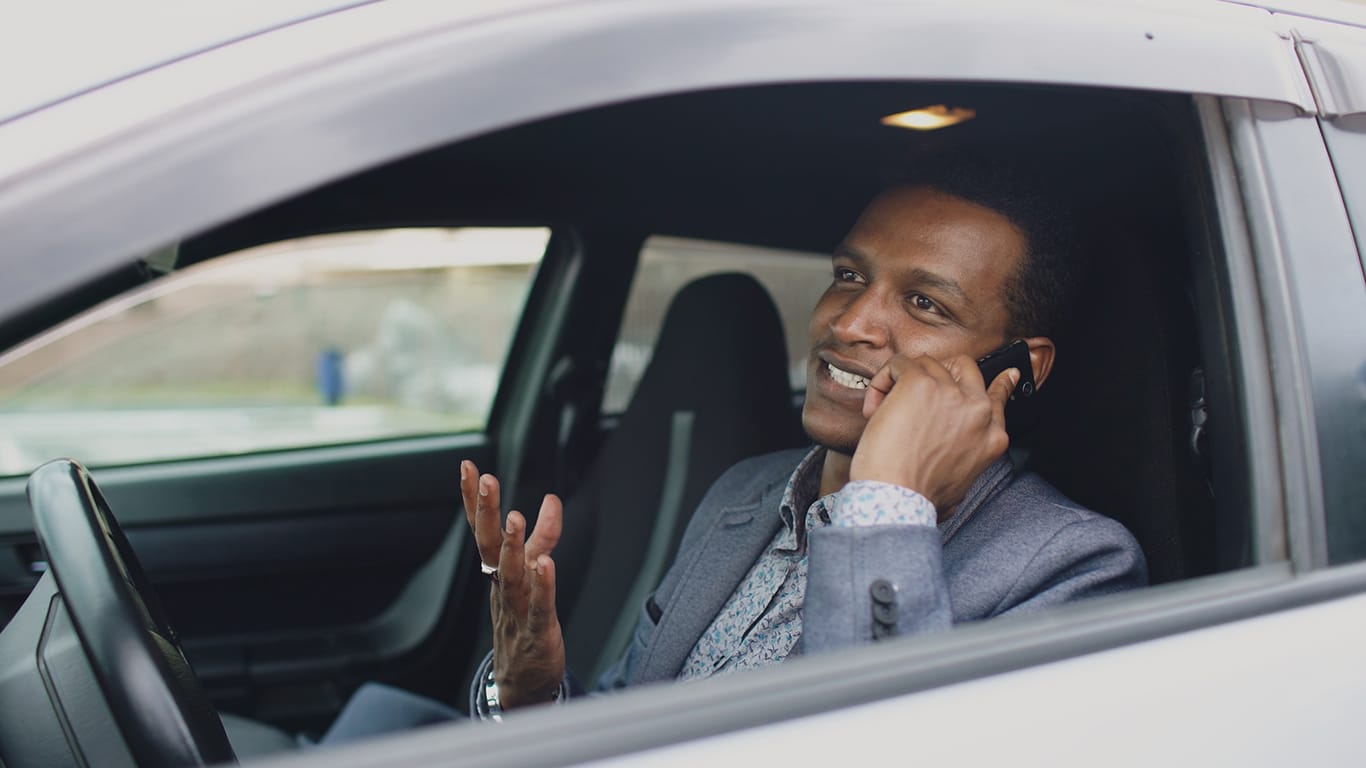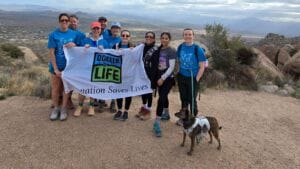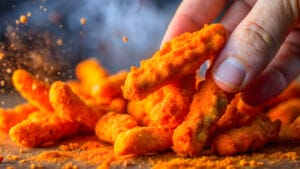As they navigate through the relentless ebb and flow of traffic, many commuters engage in various activities to pass the time: some tap out rhythms on the steering wheel, others immerse themselves in the latest podcasts or radio broadcasts, and there are those who gaze vacantly into the distance, an expression of resignation etched on their faces. Yet, amidst this daily grind, a significant portion of these travelers are transforming their gridlock frustrations into opportunities for productivity. A new study has revealed the sheer number of business deals taking place during rush hours across the nation’s busiest routes, including an astonishing 44,080 business deals that take place each morning on I-10 in Phoenix.
LEARN MORE: This is why Scottsdale ranks as No. 8 hardest-working U.S. city
This was uncovered through a detailed survey conducted by LawLinq, who queried 3,000 commuters about their working habits during rush hours. The findings are telling—many acknowledge that their workday begins not upon arrival at the office, but amidst the standstill of traffic. They were able to pinpoint the top 150 rush hour routes where, it appears, the most business deals are taking place while in America’s most congested corridors. Unsurprisingly, California and Florida rush hour routes dominated.
Rush hour business deals in Phoenix
Arizona had three rush hour routes included in the top 150 for business deals done behind the wheel:
#39: I-10 in Phoenix: 44,080 working behind the wheel.
The I-10 in Phoenix, slicing through the heart of the city, becomes more than just a thoroughfare; it turns into a mobile business center. As vehicles inch along this heavily trafficked route, many commuters, ranging from corporate executives to small business owners, seize the opportunity to start their workday. They conduct conference calls, listen to industry-specific audiobooks, and use speech-to-text technology to send emails or create to-do lists. This corridor, bustling with trucking and commuter traffic, mirrors the hustle of a busy office, with professionals creatively utilizing their time behind the wheel to stay ahead in the fast-paced business environment of Phoenix.
#50 : I-17 in Phoenix: 39,672
On I-17, connecting central Phoenix to the northern suburbs, the mix of commuter and tourist traffic creates a unique dynamic. Professionals traveling this route often use their commute time to catch up on work, especially during the stop-and-go traffic common on weekends and holidays. It’s not unusual to see drivers reviewing audio recordings of meetings, strategizing their week ahead, or networking over hands-free calls. This highway becomes a lifeline for professionals looking to balance their busy work schedules with the demands of commuting, turning their vehicles into an extension of their office space.
#62: Loop 101 in Phoenix Metro Area: 37,468
Loop 101, encircling the vibrant suburbs of Scottsdale, Glendale, and Tempe, is a hotspot for suburban professionals turning drive time into work time. Amidst the traffic caused by rapid suburban expansion and events, savvy commuters engage in a range of work-related activities. Marketing professionals might be brainstorming campaign ideas, tech workers could be liaising with their teams via conference calls, and entrepreneurs might be pitching to potential clients, all while navigating the Loop.
The top 10
#1: I-10, Los Angeles: 111,720 working behind the wheel.
Out of all the busiest rush hour routes in the U.S., more business is taking place on LA’s I-10 than anywhere else. This key east-west corridor experiences heavy congestion as it serves as a major commuting route for the dense populations of the Greater Los Angeles area, including connecting downtown to the densely populated Westside. It appears that the I-10 in Los Angeles isn’t just a freeway; it’s the city’s unofficial boardroom on wheels. This is how the savvy Angeleno turns the great parking lot known as the I-10 into the most productive place since Silicon Valley’s coffee shops. After all, if you can make it here, you can make it anywhere—just a few hours later than you planned.
#2 : US 101, Los Angeles: 102,144
Another LA route placed second in the nation overall. Traffic is heavily impacted due to its route through several key business and entertainment districts in the city, compounded by frequent on and off-ramp traffic in the San Fernando Valley. Drivers here aren’t just steering wheels; they’re steering negotiations, mergers, and the occasional online shopping spree. LA’s 101 is where the traffic is bumper-to-bumper, but so are the opportunities.
#3: I-95 in Miami-Dade County: 100,320
This route experiences severe congestion due to being a major route for commuters in the densely populated Miami metro area, coupled with heavy tourist traffic. The savvy Miamian knows that every minute crawling along I-95 is a chance to multitask by closing some deals. Here, the slow lane is the new fast track to success.
#4: I-405, Los Angeles: 95,760The I-405 in Los Angeles, affectionately known as ‘The 405,’ is one of the most congested freeways in the U.S. It suffers from heavy traffic due to its central role in L.A.’s sprawling geography, connecting the San Fernando Valley to the Los Angeles International Airport and beyond. It’s on this highway that Hollywood writers find their muse somewhere between a billboard and a bumper sticker. The 405 is LA’s melting pot of ambition, where you can witness a display of multitasking: one hand on the wheel, the other flipping through a pitch deck, all while perfecting the art of the strategic coffee sip to avoid pothole spills. For many, the 405 ‘rush hour’ is just a cute term for ‘time to hustle.’
#5: I-5, Los Angeles: 92,568
As a primary north-south artery through the heart of California, the I-5 sees heavy congestion in L.A. due to high commuter and freight traffic. As the sun casts glares off laptops and tablets, the I-5 transforms into a freeway of opportunity. It’s where screenplays are written in the heads of hopefuls, and where entrepreneurs pitch to clients over hands-free devices. It’s also the only place where ‘speeding’ means getting through your to-do list, not your commute.
#6: SR 91, Southern California: 89,376
State Route 91, or the infamous 91 freeway in Southern California, is where time stretches out like the endless summer sky. This stretch experiences heavy congestion as it serves as a main commuter route between the Inland Empire and Orange County. Here, savvy SoCal commuters don’t just drive; they thrive, turning their car into a makeshift office. It’s a freeway where every traffic jam is a networking event and every overpass, a chance to mull over that new podcast idea.
#7: I-45 in Houston: 87,780
The highest place non Cali/Floridian route, The I-45 in Houston is known for congestion as it serves as a critical link between downtown Houston, the residential suburbs, and Galveston, with heavy daily commuter traffic. Amidst morning rush hours, you’ll find oil tycoons trading stocks on their dash-mounted tablets, tech wunderkinds coding the next space-age software, and maybe even a cowboy hat-clad lawyer wrangling a contract or two.
#8: I-75 in the Miami metropolitan area: 83,600
The I-75 faces heavy traffic as it serves as a key north-south route for both local commuters in the western suburbs and long-distance travelers. Miami’s movers and shakers, however, don’t just sit back and soak in the sun; they turn their vehicles into vessels of venture. In this mobile melting pot, you’ll find entrepreneurs launching startups from the backseat, and realtors sealing waterfront property deals on speakerphone.
#9: SR 826 (Palmetto Expressway) in Miami: 83,600
The SR 826, or the Palmetto Expressway, is known for congestion due to its crucial role in connecting western suburbs to downtown Miami and the Miami Beach areas. Drivers here dodge potholes and plot graphs, deal with mergers and missed exits, all the while sipping on Cuban coffee to keep the business buzz going.
#10: I-80, San Francisco Bay Area: 82,99
Rounding up the top 10 came the I-80. This freeway experiences heavy congestion as it serves as a main artery into San Francisco, including traffic to and from the Bay Bridge. Here, every Prius and Tesla is a think tank on wheels, and the air is thick with the scent of ambition. The I-80 is less of a highway and more of a rolling TED Talk, with every vehicle a stage for ideas worth spreading, albeit at 10 mph.




